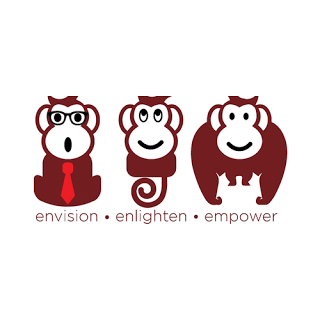Pearl Zhu's Blog, page 1365
February 10, 2016
Three Aspects in Managing Change Continuum
 Change is a digital continuum: Change is a volatile subject, just like change itself. Everything changes continuously by following the laws of evolution, and the rate of change is accelerated. Organizations, like individuals, need to be in flow to operate smoothly. An organization achieves this state of equilibrium through its management layers. The strong support for continuous improvement is an essential strategy. The old stimuli of needing to change because of IT, major competitors or new market entrants are no longer the only catalysts for change. And today it is so much more about sensing emerging customers’ needs and creating new markets. The inevitable range, breadth, and pace of uncontrollable factors acting on any organizations mean constant fine tuning is essential. Change is not for its own sake, it is an ongoing business capability to execute the strategy and compete for the future. Here are three aspects of managing today’s change continuum.
Change is a digital continuum: Change is a volatile subject, just like change itself. Everything changes continuously by following the laws of evolution, and the rate of change is accelerated. Organizations, like individuals, need to be in flow to operate smoothly. An organization achieves this state of equilibrium through its management layers. The strong support for continuous improvement is an essential strategy. The old stimuli of needing to change because of IT, major competitors or new market entrants are no longer the only catalysts for change. And today it is so much more about sensing emerging customers’ needs and creating new markets. The inevitable range, breadth, and pace of uncontrollable factors acting on any organizations mean constant fine tuning is essential. Change is not for its own sake, it is an ongoing business capability to execute the strategy and compete for the future. Here are three aspects of managing today’s change continuum.
People buyer-in: People really don't like change and want the familiar things. People are creatures of habit and change is stressful. To make a change strategy effective, you need to help people see 'what's in it for them' to facilitate real change. Commitment is on the other side, simply put, you need 'buy-in'! Even with buy-in, it is difficult for them to change habits and routines. Many executives believe they can accomplish change by simply mandating the change, but it is not that simple. The most challenging aspect of any Change Management plan is to gain engagement to the whole workforce. Motivation is right following inspiration. Disregarding motivation will push resistance to very high level and performance on the lowest; therefore, you won't be able to change. It is more effective to well mix the bottom-up and top-down approaches. Once a road map has been throughout and has 90% supports, one must have the determination and staying power to hold one's chosen course. Leadership confidence and commitment will reassure those who have doubt. Second when progress is achieved be sure to let all know about it along with specifics.
Silo Breakdown: Silos are inevitable in every structured organization. Silos are a method of containment and storage: bounded groups or insular tribes are evidence of silos, and silos are reservoirs for homogeneous thinking, limiting the organization's creativity and innovation. Silos are opposite of the strategy alignment to achieve its vision, its mission, and its goals. If you find that you need to organize in silos in order to be effective then there's a good chance, you don't have an overall organization strategy. A good strategy should diagnose business issues with a holistic viewpoint and systematic thinking, set choices and take actions via cross-functional collaboration, and continuous interaction. It is the responsibility of the leaders to initiate his or her team to break down the silos to realize the common goals or strategy which are far more important than the personal and departmental goals. Fostering collaboration is the key to creating a seamless organization when in pursuit of a strategy.
 Measure the right things and measure them right: The challenge with measuring change has to do with the complexities of the organization that is imposing change upon their employees. How do you design metrics to measure what changes and how these changes are measured? What is the relevant metrics and how can they be quantified and validated? When you measure the end and not the means, the silo walls will become retractable. The problem stems from the way outcomes are being measured. When the collective outcome is the focus, the silo walls collapse. When individual and departmental outcomes are measured, the walls go up. In other words, what are the organization's rewards and recognition structure perpetuating? Differentiated performance metrics and rewards systems tend to bring this shift in perspective about, but they too are a necessary aspect of how an organization operates -- until they become counter-productive and have to be changed. Oftentimes, the organization may not have the systems and structures in place prior to implementation to actually monitor and track the change. Measuring change involves first accurately identifying where you are now. Then, clearly identifying where you want to be once the change is complete.
Measure the right things and measure them right: The challenge with measuring change has to do with the complexities of the organization that is imposing change upon their employees. How do you design metrics to measure what changes and how these changes are measured? What is the relevant metrics and how can they be quantified and validated? When you measure the end and not the means, the silo walls will become retractable. The problem stems from the way outcomes are being measured. When the collective outcome is the focus, the silo walls collapse. When individual and departmental outcomes are measured, the walls go up. In other words, what are the organization's rewards and recognition structure perpetuating? Differentiated performance metrics and rewards systems tend to bring this shift in perspective about, but they too are a necessary aspect of how an organization operates -- until they become counter-productive and have to be changed. Oftentimes, the organization may not have the systems and structures in place prior to implementation to actually monitor and track the change. Measuring change involves first accurately identifying where you are now. Then, clearly identifying where you want to be once the change is complete.
Change is the new norm and happens the whole time thereby delivering faster and increasing market share. Change can not be just another thing that needs to be accomplished. It has to be woven into communication, process, and action of the organization. In today's work environment. It takes a lot of energy to break habits and outdated thought processes, but change is happening at a more rapid pace. If you make change part of your routine, then change becomes easier to deal with, and change also becomes a competitive business capability in thriving at today’s “VUCA” digital dynamic.
Follow us at: @Pearl_Zhu
Published on February 10, 2016 22:53
Five Pitfalls to Fail IT
 IT plays a more significant role in the organization than ever, because information is pervasive, permeating into everywhere in a contemporary business today, and the speed of change is increasing, IT is a critical element in improving business agility to adapt to changes. However, it doesn’t mean it is an easy job to run a high-performing IT organization. What are the pitfalls to fail IT, and how to overcome them in running a high-effective IT organization?
IT plays a more significant role in the organization than ever, because information is pervasive, permeating into everywhere in a contemporary business today, and the speed of change is increasing, IT is a critical element in improving business agility to adapt to changes. However, it doesn’t mean it is an easy job to run a high-performing IT organization. What are the pitfalls to fail IT, and how to overcome them in running a high-effective IT organization?
Overpromise, and under delivery: IT project priority is critical for many organizations, because most of IT organizations are still at the lower level of maturity, being perceived as a cost center, slow response to business’s request, spend most of the resources on “keeping the light on.” It’s a department usually under-budget, overloaded with the projects assignment, and with a reputation on over-promise and under-delivery. Many IT leaders cite mistakes in managing the demand pipeline, either by not setting the right priorities well with the business units, or just taking on too much and crushing their team. The major contributing factors to IT overloading are “ineffective leadership,” "insufficient resources," “de-motivated teams,” and the classic “can’t say no.” Many times, IT leaders don’t have a seat at the big table to create the strategy or functional executives hold silo thinking and unhealthily compete for limited resources, thus, they can’t prioritize and assign limited resources wisely; or work collaboratively to plan, manage, govern and measure projects effectively.
Fail to engage users in IT transformation: Engaging and empowering your end user is vital. Particularly as business has become more tech-savvy, and as such, aware of their power to demand what they want, when and how they want it. Collaborate with customers and partners, as they are what makes or breaks a successful IT. IT needs to invent itself in a very entrepreneur fashion.With the startup world growing as fast as they are, the disruption of IT will continue. How to re-imagine customer-centricity by going through the change and IT transformation. It is the smart business leader who takes control of business strategy and leverages IT tools and technologies to meet targets incorporated in 'said' strategy.
“Lost in translation” symptom: The mistake that most organizations make in business communication is to fail to translate the high-level language of strategy into the professional language of the various staff specialisms. Strategy communication has to be customized from general management background to technical background employees. Ultimately a strategy has to end up expressed in people's job descriptions and workloads. Engineers have engineering language, marketers have marketing language, etc. But the highly effective business leaders and strategists are business “multi-linguist” who can master at different business dialects and convey the right message to tailor different audiences.
High IT project failure rate: IT project failure can damage business overall capability and even brand reputation to serve end customers for the long term. Project failure is due to poor management, complexity, and business participation. The root causes of failure can be broken down into the culture, politics, expertise, policy and technology categories. More specifically, IT Project fail because 1) Project management by IT is weak 2) IT project are generally system projects; they cover multiple elements, the main problem is that IT effort is to get the individual elements to work but never to get the different elements to work well together 3). IT project focuses on capability and not effectiveness.
 Lack of effective IT leadership: Business transformation needs to start at and be led by the top of the organization. What needs to change and why? CIOs need to capture the full picture, the holistic business insight, rather than IT picture only. They should educate other business functions with data that business as whole is superior to the sum of pieces. CIOs can also provide valuable insight in the form of money saved, revenue from new unexplored business idea etc., at the same time, CIO should collect feedback from the business upon how to improve IT services & satisfy customers. They can deliver ‘competitive capability” to business as many businesses will plateau without IT, so there is a co-dependency that should be recognized in a mature - respectful manner that facilitates the strategic goals and objectives of the enterprise. Leaders must clearly articulate that message to their organization so managers and employees can actually execute it. Most successful CIOs have a good balance of technology and business. It doesn’t so matter where the CIO comes from as long as he or she understands the mission: to drive the business growth and improve IT maturity.
Lack of effective IT leadership: Business transformation needs to start at and be led by the top of the organization. What needs to change and why? CIOs need to capture the full picture, the holistic business insight, rather than IT picture only. They should educate other business functions with data that business as whole is superior to the sum of pieces. CIOs can also provide valuable insight in the form of money saved, revenue from new unexplored business idea etc., at the same time, CIO should collect feedback from the business upon how to improve IT services & satisfy customers. They can deliver ‘competitive capability” to business as many businesses will plateau without IT, so there is a co-dependency that should be recognized in a mature - respectful manner that facilitates the strategic goals and objectives of the enterprise. Leaders must clearly articulate that message to their organization so managers and employees can actually execute it. Most successful CIOs have a good balance of technology and business. It doesn’t so matter where the CIO comes from as long as he or she understands the mission: to drive the business growth and improve IT maturity. IT is the key component in building up differentiated business capabilities nowadays. To avoid these potential pitfalls. IT needs to attribute business value to your company in building close companionship with your business peers, customers, and partners, grow high effective IT leadership, also in developing multi-dimensional views of KPIs that show how IT is improving business and enforcing business capabilities.Follow us at: @Pearl_Zhu
Published on February 10, 2016 22:51
February 9, 2016
Nine Principles to Run a High-Effective Digital IT
 Business paradigm is shifting from an industrial era to an information/digital era, technology plays a pivotal role in such transformation, and it is penetrating into every core process of the organization; companies that lacked the skills to manage information technology effectively suffered compared with competitors that had mastered those skills.The successful enterprises have IT systems that are not cumbersome but enabling. Enablement through unobtrusiveness is what drives innovation and the improvement in the ability of the enterprise to learn and grow as an entire organic system. But, more specifically, what are the principles to run a high-effective digital IT?
Business paradigm is shifting from an industrial era to an information/digital era, technology plays a pivotal role in such transformation, and it is penetrating into every core process of the organization; companies that lacked the skills to manage information technology effectively suffered compared with competitors that had mastered those skills.The successful enterprises have IT systems that are not cumbersome but enabling. Enablement through unobtrusiveness is what drives innovation and the improvement in the ability of the enterprise to learn and grow as an entire organic system. But, more specifically, what are the principles to run a high-effective digital IT?
One size does not fit all: The CIO has to be able to navigate the business objectives and corporate strategy, and lead the creation and execution of the corresponding technical strategy for the company. . It means that the CIO is able to constantly and dynamically lead an IT structure that will seamlessly support the business and well ahead of the business requirement; the ability to interact with business in their processes and pain areas, the ability to bring out a customer-tailored and technology driven solution, driving adoption of applications, be the spinal cord for the organization - integrating various departments, to simplify and unify processes across functional boundaries, and often across the entire enterprise.
Listen, listen, listen and listen some more: One of the biggest obstacles to running a high-effective IT is the disconnect and misunderstanding between IT and business with “he said, she said” scenario. IT needs to be an integral part of the business, thus, IT folks need to listen, and listen more. IT is first and foremost about serving the customer. Develop an IT culture of customer centricity. Communicate IT performance in business-relevant language. IT resources have to be focused on providing excellent customer services and customer expectations need to be clearly understood and monitored regularly.
Do not let best practices destroying the values: IT needs to establish the right set of principles, as well as develop and continuously update the best and next practices. However, what is the best yesterday will not be best tomorrow. The bottom line is "best practice" which is a benchmarking tool and only true for the time and given environment. Taking a best practice from one environment into another, could turn out to be the worst practice, as so-called best is now out of its benchmarking context. Best practices usually only focus on process efficiency, about know-how, not get broader thought about process effectiveness, dig through why, today's process is no longer isolated, it's interrelated with the latest technology and the best talent, the path to excellence is to think more closely with business goal, iterative communication, and multitude of choices.
‘KISS’ Principle: “Keep it Simple” is one of the most important principles and agile philosophy to run a digital IT, though by its nature, IT is complex, it doesn't mean IT should continue to complicate the matters or increase unnecessary complexity without disciplines. Simplicity is a behavioral attitude to see things as and what and where they are and be content and cool as it is. Certainly the “KISS” principle (Keep it simple stupid!) is one to follow wherever possible to either run an IT project or manage IT as an overall business discipline.
SMART principle: Simplicity is surely important, but at times there is a need for complexity in the right place to incorporate the right elements in the calculation, to make the KPI a true indicator of performance. If you follow the SMART principle then you won't go far wrong - Specific, Measurable, Achievable, Relevant and Time-based. Fortunately, that's what computers are for - to take the grind out of complex calculations. Metrics is the obvious method for measuring quantitative objectives. However, it is important to have criteria for rating qualitative objectives as well to answer the question: what does it mean to achieve the KPI? Indicators should be very flexible. Every relevant indicator should be synchronized and arranged logically. First measure the right things, and then measure them right. Measure IT in business terms: "Do not just measure the cost of IT but all the return that it provides." Companies that invest heavily in IT should be careful at analyzing the costs associated with this investment as the savings are often buried within the operational side of the business.
Agile needs more engineering discipline, not less: Agile is emerging as a mainstream software project development methodology, the best advantages it brings include interactive communication, iterative delivery and end customer satisfaction. Agile takes more disciplines, not less. Engineering practices are the core. Everything else is built on that. You achieve the ability to be agile in your software development by following engineering practices that allow you to adapt as efficiently as possible. The benefits of agility are not sustainable unless engineering practices are adopted in the earnest. So while practices related to business analysis and project management will yield quick wins, the optimal level of benefits and impact come in only when engineering practices are adopted.
Doing more with innovation: The popular IT mantra in the industrial era is “Doing more with less.” But digital is the era of innovation, “doing more with innovation” needs to be one of an important IT management principles to improve the organizational competency and maturity. Why do innovations happen and who are the strategic partners to drive innovation? Innovations happen because of specific business needs. Unique challenges become more appear as we push the limits of the available technology, which pushes us to find a better solution to the problem on hand.
The principle of doing IT procurement is the same way you do the rest: centralized, decentralized or hybrid: Ultimately whether something is considered "better" or "worse" means that it must have some criteria and standards against which it is being assessed. All business focuses on ultimate and strategic objectives if there is any vision or strategy at all in your business. Whether you have a procurement organization or if IT handles procurement, its effectiveness can only be assessed as "better" or "worse" based on how it achieves those ends.
 Never stop managing IT risks: Foster a governance process to ensure key stakeholders have input into planning, allocation, and commitment of resources. CIOs must understand the fundamentals of the environment and engage key decision makers and stakeholders on their terms. IT Governance is a vector of quality, for both the maturity of process and outcome. Eventually, as the company grows, so will the need for standard policies and procedures. Not just to cover the “risk” management, but to create a risk intelligent environment in which IT innovation can excel within the constraints of the hierarchy of the organization.
Never stop managing IT risks: Foster a governance process to ensure key stakeholders have input into planning, allocation, and commitment of resources. CIOs must understand the fundamentals of the environment and engage key decision makers and stakeholders on their terms. IT Governance is a vector of quality, for both the maturity of process and outcome. Eventually, as the company grows, so will the need for standard policies and procedures. Not just to cover the “risk” management, but to create a risk intelligent environment in which IT innovation can excel within the constraints of the hierarchy of the organization. IT needs to focus on the fundamental business principles, not overly rigid rules to run an high-effective and high-performing IT in the digital era. So IT can take more resource to do innovation, not just an over-controlling support function to keep the light on; and the most important thing is upon how to build trust relationship with business, practice governance with agility; build order over control; prioritize people over process and business as a whole over functional silo, to play decent role as technical advisor, data steward, customer advocate, governance champion, and even more. Follow us at: @Pearl_Zhu
Published on February 09, 2016 22:32
The Monthly Change Management Agenda: Navigating Changes via” 5W+1H” Inquiries Feb. 2016
 Change is inevitable, but too often changes are made as a reaction to outer impulses, crisis, and demands. This is the bureaucracy’s way of meeting the challenges. The perspective is often rational, an automatic cultural response; defending already existing structures, all that we take for granted, without questioning the underlying premises. So in order to make change both proactive and sustainable, How to make great inquiries - change via questioning?
Change is inevitable, but too often changes are made as a reaction to outer impulses, crisis, and demands. This is the bureaucracy’s way of meeting the challenges. The perspective is often rational, an automatic cultural response; defending already existing structures, all that we take for granted, without questioning the underlying premises. So in order to make change both proactive and sustainable, How to make great inquiries - change via questioning?
Navigating Changes via” 5W+1H” Inquiries
Three Big “WHY”s in Change Management: Change is the most significant characteristics of the digital age, and it’s multifaceted. Change also becomes an important business capability, not just an ongoing project or a one-time business initiative. “Change Management” is an overarching term that encompasses extensive planning, communication, discovery, creativity, measurement, etc. But the first step first, you need to figure out what are the very reasons and what are the ultimate goals for changes? What are the big WHY questions you should ponder in order to manage change more seamlessly?
Three Big “WHAT”s in Change Management: Everything changes continuously and the rate of change is accelerated. Change is no longer just a one-time initiative, but an ongoing capability. Change capability is one of the strategic capabilities which underpin successful execution and move the organization from efficiency, effectiveness to agility and maturity. Besides the "Big WHYs" about the change we discussed earlier, here are three big WHAT about Change Management.
Three Big WHOs in Change Management: People are the center of any Change Management, and people are also the weakest link in any change effort as well. Therefore, change agents are critical, as they have been an invaluable source of knowledge, business visions, insight, and support etc. But more specifically, who are proactive change players, and why are they so critical in business transformation?
Three big “WHEN”s in Change Management: Corporate change can be a simple modification of strategy, a business process improvement or a more radical digital transformation. Either at the individual or organizational level, change is perhaps a one-time project in the static industrial era; but change has to become an ongoing capability at dynamic digital age. Besides three big “WHY” about changes, three big “WHAT”s about changes, three big “HOW” about Change Management, here is the further question - WHEN should you make change happen - there is the time to sow, and the time to reap - How to manage change cycle more effectively?
Three Big “Where”s in Change Management? Change comes in two forms; good change (improvement) or bad change (deterioration). The good change can drive business growth and collective progress; the bad change will deteriorate the business development, lead to negative perspectives or backward direction. And the purpose of Change Management is to enable and accelerate good change, discourage and eliminate bad changes. Change has to be orchestrated at all levels. Besides exploring WHY, WHAT, WHEN, WHO questions about changes, here is the last “W” -Where shall you change?
 Three Big “How”s of Change Management? Change becomes fundamentally difficult in most organizations because it is treated as something distinct from running the business, evolving performance and increasing results over time. There are many reasons for changes, and perhaps, even more, reasons for resistance to changes as well: It may be a shift in power, a need to learn new skills, to manage a different team, to adopt the new way (mindset, methodology or process, etc) to do things etc. Besides three big “WHY” about changes, three big “WHAT”s about changes, and here are three big “HOW” about Change Management?
Three Big “How”s of Change Management? Change becomes fundamentally difficult in most organizations because it is treated as something distinct from running the business, evolving performance and increasing results over time. There are many reasons for changes, and perhaps, even more, reasons for resistance to changes as well: It may be a shift in power, a need to learn new skills, to manage a different team, to adopt the new way (mindset, methodology or process, etc) to do things etc. Besides three big “WHY” about changes, three big “WHAT”s about changes, and here are three big “HOW” about Change Management?
The “Future of CIO” Blog has reached 1.3 million page views with about 2500+ blog posting in 59+ different categories of leadership, management, strategy, digitalization, change/talent, etc. The content richness is not for its own sake, but to convey the vision and share the wisdom. Blogging is not about writing, but about thinking; it’s not just about WHAT to say, but about WHY to say, and HOW to say it. It reflects the color and shade of your thought patterns, and it indicates the peaks and curves of your thinking waves. Unlike pure entertainment, quality and professional content takes time for digesting, contemplation and engaging, and therefore, it takes time to attract the "hungry minds" and the "deep souls." It’s the journey to amplify your voice, deepen your digital footprints, and match your way for human progression.
Follow us at: @Pearl_Zhu
Published on February 09, 2016 22:28
February 8, 2016
Being an Inclusive Leader without Talking about Diversity
 In many traditional multinational organizations, there is often a diversity agenda with good intention to make equal opportunities, however, sometime it leads to further divide. The prefix ‘div’ seems to have a negative connotation associated with the words such as, division, divide, divergent. By focusing only on what makes people different or even using a certain “diversity” vocabulary, you actually gear their mind to think about differences first, and even build the gaps in people’s minds. Inclusiveness is perhaps the better word to reflect the digital trend for people-centricity, the prefix ‘in’ has the positive connotation associated with the words such as information, intention, or intelligence. To lead more effectively, empathetically, and wisely, can you be an inclusive leader without talking about diversity? And then what should you talk about - the imperative and the goals of inclusiveness?
In many traditional multinational organizations, there is often a diversity agenda with good intention to make equal opportunities, however, sometime it leads to further divide. The prefix ‘div’ seems to have a negative connotation associated with the words such as, division, divide, divergent. By focusing only on what makes people different or even using a certain “diversity” vocabulary, you actually gear their mind to think about differences first, and even build the gaps in people’s minds. Inclusiveness is perhaps the better word to reflect the digital trend for people-centricity, the prefix ‘in’ has the positive connotation associated with the words such as information, intention, or intelligence. To lead more effectively, empathetically, and wisely, can you be an inclusive leader without talking about diversity? And then what should you talk about - the imperative and the goals of inclusiveness?
Business driver: Any organization should focus on learning new things and how to surge forward in creating success stories. We can learn a lot from different mindsets (thought processes), cultures and positions, so organizations as a whole can be competitive enough to keep surging further and build a truly global company. Orienting people and making them aware of the inclusiveness in their organization or team, helps them understand the value of harnessing the unique competency and cognitive difference, and then giving them the tools and experience of how to effectively communicate and build trust in a dynamic digital working environment. Leaders should always look for the capabilities and skills that they don't have so that they can build a winning team and complement each other. Hence, inclusiveness is all about solving complex problems and driving business growth,
Innovation need: A collection of people who think innovatively can adapt instantly, who give the company a competitive advantage. It also means managing people well and as technology develops, creating the right mix of automation and human creativity. The fire of innovation, adaptability and creativity are fuelled by cognitive diversity, when people with a wide range of perspectives work together; not just people of different ages and gender, but people who are different across every dimension with different backgrounds, physical characteristics, life experiences and personalities. It is usually essential and key to reaping the benefits of an inclusive organizations. Organizations need to build an innovative and inclusive culture, this only happens when the ‘inclusiveness mindset’ is available with top management, and the focal point of management is to harness innovation and encourage creativity. In some cases, organizational culture is so powerful and even then will be able o influence the surrounding societies of the organization. The business leaders must work with the right mindset to create an inclusive organization with every dip in the business lifecycle, from individual thinking to collective mind (culture); from strategy to execution; from process management to performance measurement, to make it both the principle and practice.
 Unleash potentials: Good management practice is the ability to harness the best potential of all human resources in the organization. It is a waste of resources to leave any valuable human potential left unrecognized, untapped and unused. Silos are the opposite spectrum to integrative diversity and limit the organization's potential. Identities and differences are the sources of creativity although insulating them within silos contains this potential. There are all kinds of differences that exist between individuals. The focus of inclusiveness needs to focus on cognitive differences, skills, abilities and the wealth of ideas since the value lies in the contributions of the individual to the organization. Effective communication is also important, since different perspectives, and talent, lead to well-rounded ideas and solutions. It is about skill and ability to work together to bridge the gaps and build business competency.
Unleash potentials: Good management practice is the ability to harness the best potential of all human resources in the organization. It is a waste of resources to leave any valuable human potential left unrecognized, untapped and unused. Silos are the opposite spectrum to integrative diversity and limit the organization's potential. Identities and differences are the sources of creativity although insulating them within silos contains this potential. There are all kinds of differences that exist between individuals. The focus of inclusiveness needs to focus on cognitive differences, skills, abilities and the wealth of ideas since the value lies in the contributions of the individual to the organization. Effective communication is also important, since different perspectives, and talent, lead to well-rounded ideas and solutions. It is about skill and ability to work together to bridge the gaps and build business competency.
An inclusive leader embraces the full spectrum of cognitive difference. Inclusiveness needs to be well embedded into the business culture in a truly global organization, the beliefs and the work have to be sustainable--so the key is to embed the concepts and practical application, etc. into everything within the organization ranging from all people practices to engaging with the customers community, partners, etc. Being an effective and inclusive leader without talking too much diversity.
Follow us at: @Pearl_Zhu
Published on February 08, 2016 23:21
Five Aspects in Making a Bold Digital Transformation
 Organizations large or small across the industrial sectors are in the journey of digital transformation. Digital transformation is the leapfrogging change, which represents the next stage of business maturity and will improve how the enterprise works and interact with its ecosystem, with the customer at the center of its focus. But what are further aspects and detailed steps in making the bold digital transformation?
Organizations large or small across the industrial sectors are in the journey of digital transformation. Digital transformation is the leapfrogging change, which represents the next stage of business maturity and will improve how the enterprise works and interact with its ecosystem, with the customer at the center of its focus. But what are further aspects and detailed steps in making the bold digital transformation?
Vision clarification: Leadership is all about future and change. Leadership vision is to serve as an enabler for digital transformation. A visionary digital leader changes the course of business by seeing beyond what all other could see or by charting new revenue or growth through the creation of a new product or market; or share their perception about future trends of business such as digitalization, innovation, or globalization. To clear the path to changes, whether that be the elimination of obstacles or to provide coaching and guidance and making influence, so that the talent employees are limited only by their imagination. Leaders should actively make decisions that are in concert with the vision. There’s also a collective belief in the organization’s vision for the future, that this vision can and will be a success. Vision is not a mirage, and strategy planning is not "shelfware." It is important to “make vision reachable” and "make strategy happen"; vision and strategy have to be accessible, understandable, and made relevant to all levels of the organization, so that the talent employees are limited only by their imagination. So the intention of such leadership vision is to clearly define, through actions and deeds,
Change forward and upward: There are two types of change: proactive and reactive. Proactive implies anticipation of changes – external and/or internal – that will affect the company. Reactive is adaptive to change that has already occurred or is underway. A strategy for "change" should focus on betterment. Change for the sake of change doesn't help anyone. The most important factor for positive change is flexibility in planning, decide to be prepared for inevitable change, clear roles and responsibilities, and authority to adapt and act as reality changes plans. The common denominator to effecting outcomes is communication, which by definition is a two-way street. Invest in change before it happens. Change leadership and change management need to go hand-in-hand.
Speed Up: The majority of organizations today are running in between - the mix of old and new; the different departments or divisions within an organization have different speeds. In practice, even in the simplest organizations, the 'speed' is not homogeneous across the enterprise, there are differences between 'front office' and 'back office,' enterprises with multiples businesses and associated business models. So many organizations will have to 'mix & match' at least two different speeds' with appropriate GRC, accommodating the resulting different digital strategy management cycles. Hence, speed up implies to orchestrate digital transformation in synchronous way. The goal is to accelerate changes, but not too rush up for only short time gains, and strike the right balance of digital speed and stability, quick wins and long term business results.
Digital fitness: Digital is fluid, digital fitness is based on strategy competency and execution effectiveness, keep information flow to avoid information overloading, process redundancy, or overall business complication (unnecessary complexity). Make wise investment in people, technology and innovation. The emergent technology trends are where the opportunity located for real competitive advantage from investments in IT into the future. Whether an organization realizes the potential advantages from these technologies depends on many factors. Either information or technology is the means to the end, not the end. l if you don't know how to use it properly you won't get good results. You have to embrace the new technology and finding ways to create strategic value. Keep digital fit means you need to make consolidation, integration, modernization, automation, innovation, and optimization and manage digital transformation in a systematic way.
 Innovation imperative: Innovation needs to become a digital lifestyle of a company. At the organizational level, transformational innovation won’t take place if their core tendencies in their business life cycle aren’t identified and overcome. Unlearning what a company has learned is part and parcel of fixing what is broken. At the industrial age, companies of all sizes, especially large corporations, are designed to function in silo to improve efficiency, but often suck at innovation. Because they become too dependent on satisfying corporate regulation or protocols, and never get around to developing a culture that fosters/rewards innovation until it is too late. But digital is the age of innovation which can be stimulated via building a culture of innovation, catalyzed via enforcing across-functional interaction, and reaping the result via practicing systematic management disciplines. Innovation comes with the increased knowledge and understanding of facts. You never know how innovative you might be in some field before encountering the problems and before the adoption of solution. Innovation is all about to leverage the better way to do things or meet higher customer expectation.
Innovation imperative: Innovation needs to become a digital lifestyle of a company. At the organizational level, transformational innovation won’t take place if their core tendencies in their business life cycle aren’t identified and overcome. Unlearning what a company has learned is part and parcel of fixing what is broken. At the industrial age, companies of all sizes, especially large corporations, are designed to function in silo to improve efficiency, but often suck at innovation. Because they become too dependent on satisfying corporate regulation or protocols, and never get around to developing a culture that fosters/rewards innovation until it is too late. But digital is the age of innovation which can be stimulated via building a culture of innovation, catalyzed via enforcing across-functional interaction, and reaping the result via practicing systematic management disciplines. Innovation comes with the increased knowledge and understanding of facts. You never know how innovative you might be in some field before encountering the problems and before the adoption of solution. Innovation is all about to leverage the better way to do things or meet higher customer expectation.
Being bold in digital transformation doesn’t mean you go rogue without disciplines; it means to have a thought-out planning, but also take calculated risks and adapt to the emergent change with speeds. You follow principles, not overly restrictive rules to inspire innovation, you build up a dream workforces with inclusive leadership and complementary capabilities and skills to run a high-mature digital organization seamlessly.
Follow us at: @Pearl_Zhu
Published on February 08, 2016 23:17
Three Questions to Assess a Person’s Advancement
 People are always the most invaluable asset in businesses. “Hiring the right person for the right position at the right time,” is the mantra of many forward-thinking organizations. The advancement of an organization depends on how advanced its people are. But how can you assess people’s advancement? Is it only based on the advanced degree they got? Or they hold an advanced title? Or they can play the latest gadgets? What are the right questions to lead thought-provoking understanding about the advancement?
People are always the most invaluable asset in businesses. “Hiring the right person for the right position at the right time,” is the mantra of many forward-thinking organizations. The advancement of an organization depends on how advanced its people are. But how can you assess people’s advancement? Is it only based on the advanced degree they got? Or they hold an advanced title? Or they can play the latest gadgets? What are the right questions to lead thought-provoking understanding about the advancement?
Are you a forward-thinking, upwards, and open-minded? The advancement starts with mindset. We are what we think. Today we are inextricably linked, in real time and in ways far more imminent than most realize. It is really difficult to become aware of things you are not aware of. Usually forward-thinking people do not restrict themselves to the conventional wisdom, they have foresight with a proactive understanding of cause and effect, not reactive seeing. It is a clear choice among future scenarios that advocates future trends. To predict is to control; to co-create is to influence what you would like to bring into being. Scenarios of possible futures create stories, this is where you want to be. The advanced thinkers are often more open-minded to new concepts and ideas. They are able to and not afraid to leverage contrarian views to shape a holistic picture. It means they feel passion about what is going to happen, the opportunities, and proactively embrace it, they have little resistance to change, often with an agile mentality to learning, growing, changing, and maturing. The advanced mindset is the force to drive the world moving forward.
Do you have advanced knowledge and how fast can you climb the knowledge-insight-wisdom pyramid? Due to the accelerated digital speed and continuous disruption, today’s digital workforce has to learn, de-learn and re-learn all the time, The advanced knowledge is not just about you can capture the latest buzzword or play the recent digital gadget, it’s about how fast you could climb the knowledge-insight-wisdom pyramid. The ultimate aim of knowledge is wisdom. The higher you climb, the more advanced you would be. We become wise when we are humble enough to be aware of and admit what we don't know and share what we know. Learning agility is the willingness and ability to learn, de-learn and relearn, and then apply those lessons to succeed in new situations. People who are learning agile continuously seek new challenges, solicit direct feedback, self-reflect, and get jobs done resourcefully.
 Do you have advanced capabilities and unique competency? The business and world become more complex and ambiguous. Therefore, the linear skills are often not sufficient to adapt to the non-linear digital dynamic. The advanced capabilities are integral, synthesizing, and recombinant. The integrity and suitability of the competency are tested through traits such as critical thinking, creative thinking, attitude, passion, entrepreneurship, leadership, maturity, and wisdom. etc. The advanced capabilities also include problem-solving ability that the talented people who have well-blended hard and soft skills and master on solving complex business problems, or know how to simplify and optimize solutions; as well as innovation capability - people who can think and communicate creatively and find alternative solutions to old problems or a new way to delight customers.A digital knowledge worker is someone for whom knowledge is the main input for work, as opposed to another worker who obviously uses his/her brain, but depends more on expertise in using a particular tool or set of tools. It is the ability to transform which exists to which is new, that differentiates the digital knowledge worker from industrial knowledge workers. After all, we all find new ways to make our work "easier," more rewarding, better for ourselves or our customers/clients and for our society.
Do you have advanced capabilities and unique competency? The business and world become more complex and ambiguous. Therefore, the linear skills are often not sufficient to adapt to the non-linear digital dynamic. The advanced capabilities are integral, synthesizing, and recombinant. The integrity and suitability of the competency are tested through traits such as critical thinking, creative thinking, attitude, passion, entrepreneurship, leadership, maturity, and wisdom. etc. The advanced capabilities also include problem-solving ability that the talented people who have well-blended hard and soft skills and master on solving complex business problems, or know how to simplify and optimize solutions; as well as innovation capability - people who can think and communicate creatively and find alternative solutions to old problems or a new way to delight customers.A digital knowledge worker is someone for whom knowledge is the main input for work, as opposed to another worker who obviously uses his/her brain, but depends more on expertise in using a particular tool or set of tools. It is the ability to transform which exists to which is new, that differentiates the digital knowledge worker from industrial knowledge workers. After all, we all find new ways to make our work "easier," more rewarding, better for ourselves or our customers/clients and for our society. Therefore, the advancement of a person starts from inside-out: the open and forward-looking mind is the very driver to learn, grow and change; the advanced knowledge is an important element in building advanced capabilities. Knowledge workforces change each day, they grow, learn, develop. Even business as a whole does. This is organic change, it is unconscious. The collective advancement of people decides how far the organization can move forward and how fast the society can make the progress.Follow us at: @Pearl_Zhu
Published on February 08, 2016 00:07
To Celebrate the Lunar Year of the Monkey: Leadership Lessons from the Animal Kingdom
 People often analogize human society to the animal kingdom, indeed, it’s vivid: In the old ancient time, perhaps dinosaurs or dragons controlled the world; in the primitive rainforest or chaotic hidden mountains, roaring lions or crunching tigers are in charge based on their muscle power; fox & wolf manipulate the surroundings due to their trickery deception. But, in a benign and friendly animal kingdom, often, the monkey is emerged as the leader to harmonize and enlighten their world from the darkness, because of their intelligence and ingenuity. In the human society, we are also moving from the “command-control” style of leadership dominated in the agricultural and industrial society to more innovative and intelligent styles of digital leadership in the digital age. So what can we learn from the spirit of the monkey at the Lunar New Year of Monkey?
People often analogize human society to the animal kingdom, indeed, it’s vivid: In the old ancient time, perhaps dinosaurs or dragons controlled the world; in the primitive rainforest or chaotic hidden mountains, roaring lions or crunching tigers are in charge based on their muscle power; fox & wolf manipulate the surroundings due to their trickery deception. But, in a benign and friendly animal kingdom, often, the monkey is emerged as the leader to harmonize and enlighten their world from the darkness, because of their intelligence and ingenuity. In the human society, we are also moving from the “command-control” style of leadership dominated in the agricultural and industrial society to more innovative and intelligent styles of digital leadership in the digital age. So what can we learn from the spirit of the monkey at the Lunar New Year of Monkey?
Intelligence: Monkeys are very similar to humans in their social organizations and matching human intelligence. Monkey are intelligent creatures who have a strong capacity to understanding and participation. Monkeys are a quick learner, their minds are as quick and agile as their body, they seem to have such fitness to display high intelligence. It can lead into a deep study of the origins of species and the examination of ancient wisdom. The old adage applied to Monkey’s “See no evil, hear no evil, speak no evil” is considered the good principle to live right on earth with a noble life. Monkeys see both dark and light, weighing all factors, and understand things from different angles.
 Ingenuity: The monkey totem is creative, energetic, ingenuity, and imaginative. Monkeys are most actively during the day, they have nature curiosity, they can move around in all directions with great vision and flexibility, thus, they can see things from different angles; and they have good ability to know where they are and where they are going. So they have ingenuity and creativity to change the environment, The ingenuity provides them to capture a new insight, a new idea, a new angle, so they show the wit and smartness that other animals can not compete with, and they have creativity to solve the odd problems
Ingenuity: The monkey totem is creative, energetic, ingenuity, and imaginative. Monkeys are most actively during the day, they have nature curiosity, they can move around in all directions with great vision and flexibility, thus, they can see things from different angles; and they have good ability to know where they are and where they are going. So they have ingenuity and creativity to change the environment, The ingenuity provides them to capture a new insight, a new idea, a new angle, so they show the wit and smartness that other animals can not compete with, and they have creativity to solve the odd problems
Dexterity: Monkey is fast, adroit, they turn, twist, jump, hang, leap effortlessly, not only are they physically dexterous, monkeys often demonstrate keen insight and agile mentality. Monkey is a cheerful animal who always bring the fast pace and fascinating motivation. they can put everything in flux, adapt to changes with wit and humor. They have both physical and mental fitness to enjoy nature, enlighten nature and influence nature.
Regardless of our current position within our social structure, the monkey symbolism reminds us of cheerfulness, ingenuity, resourcefulness, flexibility, sense of humor, energy, untamed nature, and ability to change. Wish all of us have a prosperous year of the monkey!
Follow us at: @Pearl_Zhu
Published on February 08, 2016 00:05
February 6, 2016
CIO’s Digital Agenda XXXVIIII: Building a High-Mature Digital Organization
 Digital makes a profound impact from specific functions to the business as a whole, the purpose of such radical digitalization is to make a significant difference in the overall levels of customer centricity and achieve high performing business result. But how to build a high-maturity digital organization which has the multitude of digital capability to achieve long-term business prosperity than their less digitally mature competitors?
Digital makes a profound impact from specific functions to the business as a whole, the purpose of such radical digitalization is to make a significant difference in the overall levels of customer centricity and achieve high performing business result. But how to build a high-maturity digital organization which has the multitude of digital capability to achieve long-term business prosperity than their less digitally mature competitors?
Building a High-Mature Digital Organization How to Build a High-Mature Organization: An organization or company may be in business for many years, but has not matured its management practices or lack of well-defined sets of business principles. Most of the organizations stick to the lower level of maturity mode (reactive, inside-out, and operational driven), how can they move up the maturity level to become truly proactive and outside-in, more culture intelligent and people-centric?
Digital Master Chapter IX: Digital Maturity: Digital makes a profound impact from specific function to business as a whole, the purpose of such radical digitalization is to make a significant difference in the overall levels of customer delight and achieve high performing business result.
Digital IT Maturity: Digital means customer-centric business. Digital IT should add more strategic advantages, not just a support function, and IT strategy is an integral component of business strategy, as more often than not, technology is the driver for business innovation. The trend of IT consumerization indeed provides unprecedented opportunities for IT to get more touch base with end customers, to empower employees as well. IT acts more as an ‘orchestrator,’ to conduct an information-mature, customer-centric digital organizations, IT maturity directly makes an impact on the organizational maturity.Here are five aspects of digital IT maturity
Five Aspects of Wisdom in the Workplace People spend significant time in the workplace. However, statistically, more than two-thirds of employees don’t feel engaged, what’re the negative feeling employees have, but they might never tell their managers? How to build a high engaging, high innovative and high productive working environment? How would you describe the wisdom in the workplace?
 Three Characteristics of Digital Organizations. Digital organizations are hyper-connected and interdependent, they need to be agile and innovative in order to adapt to the “VUCA” digital new normals. With the fast pace of changes and emerging digital technologies such as “SMAC,” companies large or small are also brainstorming and experimenting the next generation of organizational structure design, to improve employees’ engagement, productivity, as well as creativity across the enterprise ecosystem. So what are the important characteristics of digital organizations in from organizational design and business innovation perspective?
Three Characteristics of Digital Organizations. Digital organizations are hyper-connected and interdependent, they need to be agile and innovative in order to adapt to the “VUCA” digital new normals. With the fast pace of changes and emerging digital technologies such as “SMAC,” companies large or small are also brainstorming and experimenting the next generation of organizational structure design, to improve employees’ engagement, productivity, as well as creativity across the enterprise ecosystem. So what are the important characteristics of digital organizations in from organizational design and business innovation perspective?The “Future of CIO” Blog has reached 1.3 million page views with 2500+ blog posting in 59+ different categories of leadership, management, strategy, digitalization, change/talent, etc. The content richness is not for its own sake, but to convey the vision and share the wisdom. Blogging is not about writing, but about thinking; it’s not just about WHAT to say, but about WHY to say, and HOW to say it. It reflects the color and shade of your thought patterns, and it indicates the peaks and curves of your thinking waves. Unlike pure entertainment, quality and professional content takes time for digesting, contemplation and engaging, and therefore, it takes the time to attract the "hungry minds" and the "deep souls." It’s the journey to amplify your voice, deepen your digital footprints, and match your way for human progression.Follow us at: @Pearl_Zhu
Published on February 06, 2016 23:13
Three Aspects of Managing Digital Business Continuum
 The effects of an increasingly digitalized world are now reaching into every corner of businesses and every aspect of organizations. Business agility is imperative to meet the demands of rapidly evolving digital consumer behaviors and business dynamic. Therefore, digital leaders need to more proactively rethink the entire business, from learning to doing, from design to delivery, from talent management to customer satisfaction. Here are three aspects of managing digital continuum.
The effects of an increasingly digitalized world are now reaching into every corner of businesses and every aspect of organizations. Business agility is imperative to meet the demands of rapidly evolving digital consumer behaviors and business dynamic. Therefore, digital leaders need to more proactively rethink the entire business, from learning to doing, from design to delivery, from talent management to customer satisfaction. Here are three aspects of managing digital continuum.
Continuous learning and training: Though information is only clicks away, knowledge can also be outdated shortly. Hence continuous learning and training become more important in the digital era. Education, either formal or informal, is the means to the end, not the end itself. Informal learning at the corporate level starts to be more accessible to employees. The forms of informal learning take place in some of the most progressive organizations that support talent development. Shift the focus from formal learning and look more to placing structure around the informal learning. It doesn’t mean the formal learning programs are not worth pursuing, just that the greater value-add training is probably in other areas and can be taken with flexibility. Informal learning is on the rise with the increase of social collaboration tools. The emergence of social platforms provides the new way to learn, share and collaborate via direct applications at the corporate level. Continuous learning needs to become a lifestyle, not only a job requirement, And a quality education, regardless of styles, should open, not close one’s mind, helps receivers to inspire thinking, recognize opportunities, updating knowledges, and building capabilities and skills.
Continuous Performance Management: Today’s digital employees are multi-generational, multi-cultural, and multi-devicing, they leverage the latest digital tools to work anytime and anywhere. today’s employees also value different things compared to previous generations of workers. Therefore, talent management as a business critical process needs to be agile in adapt to the accelerated change facing in organizations. The traditional performance management based on more static processes and an annual review is no longer efficient enough to improve employee engagement and mapping staff performance with more dynamic strategy-execution continuum. How about real-time appraisals that take place consistently and can be tracked accordingly. The continuous performance management method is to track in monthly basis the performance against the company results. This will not only have a performance and goal review but also guarantee the alignment with corporate goals. Each objective has milestones that the progress can be tracked by either the employee or manager and recorded in the talent system. Objectives are then rated when they are due in the year. Each objective could even be weighted to assist with an overall year-end rating.
 Agile project management with continuous delivery: Application development projects need to bring up the most business value, the de facto best practices of managing IT project portfolio need to include such as, only manage business project, not for technology's sake, prioritize the portfolio, and manage full application life cycle in a continuous delivery mode: from App Dev to potential application retirement, with the right methodology, talent and metrics, to catch up with the speed of business change without sacrificing the quality. Agile allows for refinement and evolution of requirements definition over time. Agile development techniques focus on solving the problems that arise because customers’ needs evolve over time. Agile methods exposing the customer to early functionality is a key reason why agile works. It is often the early look at the software that lets customers realize what they want and what is being built is on track or not. The precept that developers should strive to deliver working software early and frequently is so powerful in avoiding cost overruns and delays.
Agile project management with continuous delivery: Application development projects need to bring up the most business value, the de facto best practices of managing IT project portfolio need to include such as, only manage business project, not for technology's sake, prioritize the portfolio, and manage full application life cycle in a continuous delivery mode: from App Dev to potential application retirement, with the right methodology, talent and metrics, to catch up with the speed of business change without sacrificing the quality. Agile allows for refinement and evolution of requirements definition over time. Agile development techniques focus on solving the problems that arise because customers’ needs evolve over time. Agile methods exposing the customer to early functionality is a key reason why agile works. It is often the early look at the software that lets customers realize what they want and what is being built is on track or not. The precept that developers should strive to deliver working software early and frequently is so powerful in avoiding cost overruns and delays. The multidimensional digital transformation provides impressive advantages in terms of the speed of delivering the solutions. Digital transformation is not a one-time project or a stand-alone initiative, it is a continuous journey to adapt to the new world of businesses: Fast, always “on,” highly connected and ultra-competitive. Follow us at: @Pearl_Zhu
Published on February 06, 2016 23:10



